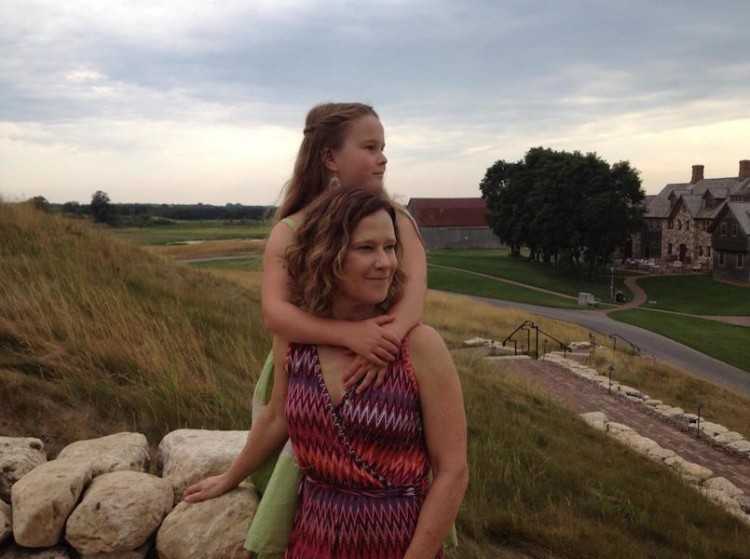I sat with three other moms on ugly green wedges of modular seating in the lobby of the hospital’s psychiatric services building. It was a Tuesday evening and we were waiting for our daughters to finish their first session of group cognitive behavioral therapy (CBT) for kids with bipolar disorder. At first, we wrapped ourselves in cocoons of awkward silence. Our eyes bounced from our phones to the clock on the wall or – whenever it dinged, rolled back its heavy doors with a groan and deposited someone into the shadowy room — the elevator.
• What is Bipolar disorder?
I glanced at the pretty Asian woman sitting next to me. I remembered her kind smile when we’d all dropped off our girls – who ranged in age from 11 (Sadie, my daughter) to 15 – in the stuffy, windowless conference room on the third floor.
“Does your daughter have bipolar disorder, too?” I asked, tentatively, feeling like an idiot as soon as I did. Duh. Why else would she be here?
She nodded. In a soft voice she told me that Lily, 15, had only recently been diagnosed. But she’d had problems since she was 12 and had been hospitalized four times. Thanks to lithium, Lily was doing better, although the drug made her lethargic and slow. Her father also had bipolar disorder.
“He passed away a few years ago,” Lily’s mother whispered. Tilting her head back, she pantomimed raising a bottle to her lips. “He drank a lot,” she said, lowering her arm. “He didn’t know he was bipolar.”
The matter-of-fact way she delivered this news hit me like the jolt of plunging into an icy lake. I was reminded, once again, just how deadly this illness can be. And how lucky we are that, in spite of her struggles, Sadie isn’t much sicker and is getting the help she needs. Lily’s mom asked how old Sadie was when she was diagnosed. Her eyes widened when I said 6. The woman sitting across from us leaned forward, listening intently to our conversation.
“How old was your daughter when you knew something was wrong?” I asked her.
“Right away,” she replied, grimacing. “Amy cried all the time when she was a baby.”
Her husband’s denial about their daughter’s condition led them to divorce. She sighed and folded her arms tighter across her chest. “Amy just goes into a really dark tunnel sometimes” she said, shaking her head.
The rest of us nodded. We all knew that tunnel. We knew how the strain of raising a child with a mental illness could chip away at even the most solid marriages. We knew what it was like to watch our girls flounder in school and lose friends. We’d felt the sting of skepticism from our own friends, relatives and others when we uttered the words “pediatric bipolar disorder.” We knew about clinging to the hope that each new medication would be the one that would prevent our child from ever crawling back into that tunnel.
The only mother who hadn’t yet spoken, a blonde woman with tired eyes, rose from her seat. She shared that her girl, Kylie, who was 12, had originally been diagnosed with ADHD. “I sobbed when the doctor told me she had bipolar disorder,” she said.
The illness had ravaged her sister’s life. More nods. We’d all seen adult family members sidelined by bipolar disorder and robbed of their potential. We’d watched them succumb to addiction and push away those who love them with their erratic moods and behavior. And we knew how the lure of suicide, with its promise to end their pain forever, always clouded their futures.
Our formerly subdued group was suddenly chatty as a gathering of sorority sisters — which, in a way, we were. Talking over each other, we swapped stories and compared notes on symptoms and medications. We didn’t slow down until the elevator chimed and one of the older girls from the group swished past us in her long bohemian skirt, signaling the 90-minute therapy session was over. Sadie was the last one to pop out of the elevator.
“How’d it go?” I asked as we headed to the parking lot, though the grin on her face answered my question.
“Really good!” she said. “But it went by so fast.”
I knew how she felt. I was pretty sure spending time with other girls who had bipolar disorder would help her.
I hadn’t anticipated how therapeutic it would be for me to hang out in the lobby with their moms.
The names in this story have been changed to protect identities.

This essay was originally published on Brain, Child: The Magazine for Thinking Mothers
